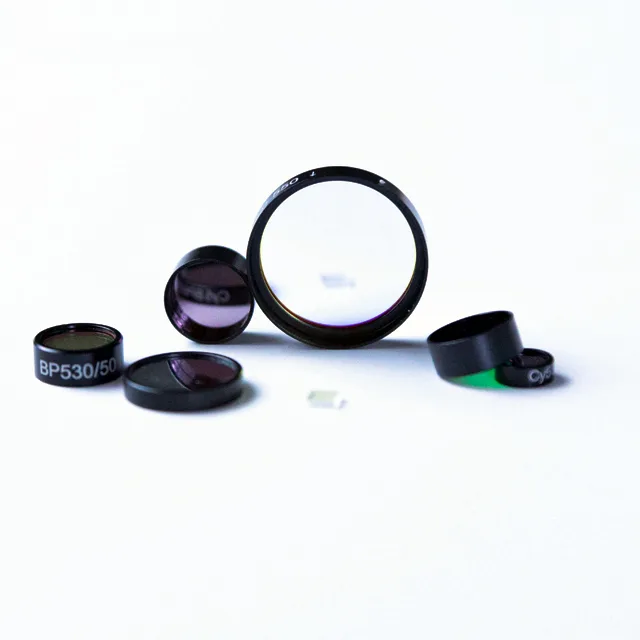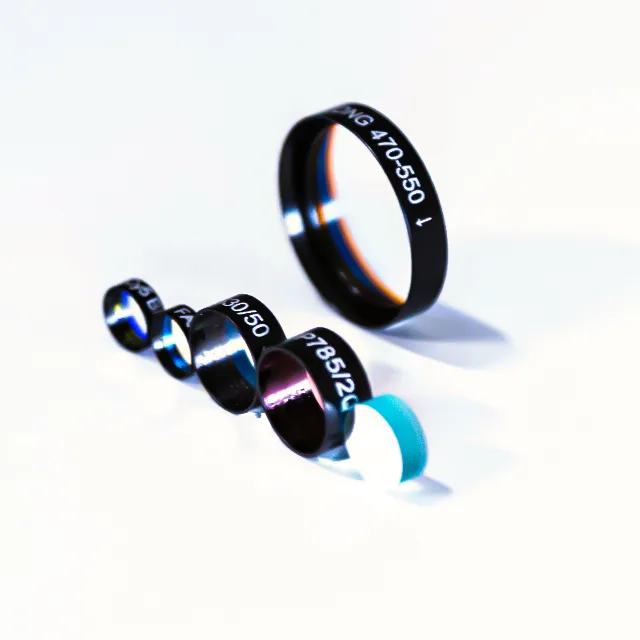LiDAR (Light Detection and Ranging) technology is quickly becoming a cornerstone of industries ranging from self-driving cars to environmental mapping due to its ability to measure distances accurately.
Optical filters are a critical but often overlooked component of LiDAR systems that significantly impact the accuracy, sensitivity, and overall performance of the system. Optical filters help isolate the desired wavelength of light, ensuring that LiDAR systems can accurately detect signals in the presence of ambient light and noise.
In this article, we’ll take an in-depth look at the importance of optical filters for LiDAR sensors, exploring their types, applications, and how they can enhance the overall functionality of a LiDAR system.
Understanding LiDAR Technology
LiDAR works by firing a laser pulse at a target and then measuring the time it takes for the reflected light to return to the sensor. The system then uses the time-of-flight data to calculate distances, creating a detailed 3D map of the environment.
However, for this process to be effective, the system must distinguish between the reflected laser signal and any interfering light sources, such as sunlight, artificial lighting, or other environmental factors.
This is where optical filters come in handy. These filters help LiDAR sensors focus only on specific wavelengths of emitted laser light, eliminating extraneous light and improving the accuracy and efficiency of the detection process.
Role of Optical Filters in LiDAR Sensors

1. Wavelength Selection
Most LiDAR systems operate at a specific wavelength, usually in the near-infrared (NIR) range, around 850 nm, 905 nm, or 1550 nm. The exact wavelength used depends on the application – shorter wavelengths (e.g., 850 nm) are typically used for industrial applications, while longer wavelengths (e.g., 1550 nm) are preferred for automotive systems because they are less affected by sunlight and can cover longer distances.
Optical filters in LiDAR sensors allow the system to selectively pass the desired wavelength while blocking any other wavelengths of light. This selectivity ensures that the sensor only captures reflected laser pulses, minimizing interference from ambient light sources.
2. Improving Signal-to-Noise Ratio (SNR)
One of the main challenges facing LiDAR is dealing with noise from various sources, such as sunlight or reflections from nearby surfaces. Optical filters significantly improve the signal-to-noise ratio (SNR) by filtering out unwanted wavelengths. This produces a clearer signal, which in turn improves the overall resolution and accuracy of the LiDAR system.
By increasing the SNR, optical filters also enable more reliable distance measurements and better overall performance, even in harsh conditions such as fog, rain, or strong sunlight.
3. Improved Sensitivity and Range
In many applications, especially in self-driving cars, the range and sensitivity of a LiDAR system are important for safety and functionality. Optical filters help increase sensitivity by allowing only reflected laser wavelengths to reach the sensor, ensuring that weaker signals from more distant objects are not drowned out by background noise.
This is especially important in environments with high ambient light levels, such as outdoor environments where sunlight can interfere with LiDAR operation. By using the right filters, the system can achieve greater accuracy over longer distances, making it ideal for applications that require high-resolution mapping over large areas.
Optical filter for LiDAR sensor
The optical filter commonly used in LiDAR systems is a bandpass optical filter.
Bandpass Filters

Bandpass filters are the most commonly used filters in LiDAR systems. These filters allow light in a specific wavelength range (band) to pass through while blocking all other wavelengths. For example, if a LiDAR system uses a laser with a wavelength of 905 nm, a bandpass filter designed for that specific wavelength will ensure that only a narrow range of light around 905 nm reaches the sensor.
This filtering process ensures that the LiDAR system is unaffected by other light sources, such as the sun or nearby artificial lighting, that might otherwise introduce noise and reduce accuracy.
Optical Filters in LiDAR Systems
Optical filters are used in a variety of LiDAR systems in different industries. Each industry has its unique requirements, making optical filters a key element in achieving optimal performance.
1. Self-driving Cars
One of the most prominent applications of LiDAR technology is self-driving cars. In this case, LiDAR is used to create a real-time 3D map of the vehicle’s surroundings, enabling the onboard computer to detect and avoid obstacles.
Optical filters are critical in this process, as they enable the system to maintain accuracy under different lighting conditions, such as driving in bright sunlight or fog.
2. Environmental Monitoring and Mapping
LiDAR is widely used in environmental monitoring, such as terrain mapping, forestry, and water body analysis. In these applications, LiDAR systems need to detect subtle changes in the environment, such as slight changes in elevation or the presence of vegetation. Optical filters help improve the resolution and sensitivity of these systems, allowing for more detailed and accurate data collection.
For example, in forestry management, LiDAR can measure the height and density of tree canopies, helping scientists monitor forest health and make informed decisions about conservation efforts.
3. Industrial Automation
In industrial automation, LiDAR sensors are used for object detection, navigation, and obstacle avoidance in robotic systems. Optical filters ensure that these LiDAR systems can operate in environments with high-intensity artificial lighting or reflective surfaces, which can cause interference.
By using the appropriate filters, industrial LiDAR systems enable more accurate object detection and navigation, improving the efficiency and safety of automated processes.
Choosing the Right Optical Filter for Your LiDAR System

Choosing the right optical filter can optimize the performance of your LiDAR system in a more user-friendly way. The choice depends on many factors, including:
- The wavelength of the LiDAR laser: Make sure the filter matches the wavelength of the laser for maximum efficiency.
- Ambient lighting conditions: In environments with high ambient light, such as outdoor environments, a high-quality bandpass filter is critical.
- Application-specific requirements: different applications may require different types of filters, e.g., for certain industrial or environmental tasks, long-pass filters or short-pass filters may be required.
Conclusion
Optical filters play an important role in improving the performance and reliability of LiDAR sensors. By choosing the right filter for the application, LiDAR systems can operate more accurately, have better sensitivity, and reduce interference from external light sources.
Understanding the interaction between optical filters and LiDAR sensors is key to maximizing the functionality of these advanced systems, paving the way for more efficient and safer applications across industries.
By employing optical filters customized for the specific needs of LiDAR systems, users can realize the full potential of this powerful technology, ensuring better performance even in the most challenging environments. In the meantime, if you have any further questions or inquiries, please contact us!
Related reading:
What is the optical filter?
What is a dichroic mirror?
How to make a low pass filter?
What is a bandpass filter?
